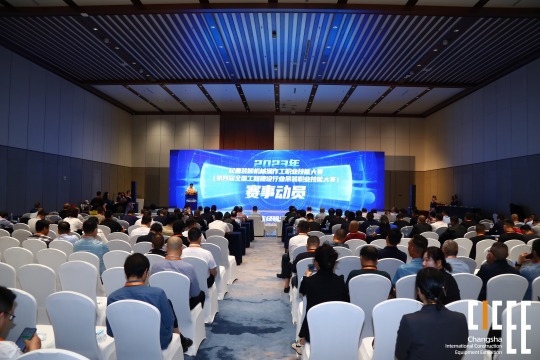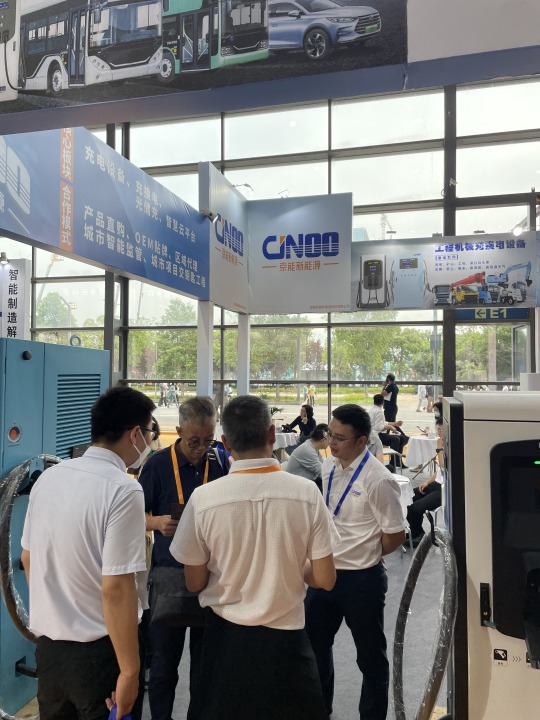#EV charging infrastructure
Explore tagged Tumblr posts
Text

Elektrum Drive publicly accessible 22 kW charging station in a residential area, Riga, March 2, 2025. Photo by D.P.
P.S. As part of the largest high-capacity charging network in the Baltic States, Elektrum Drive is installing public 22 kW charging stations at residential areas in Riga... Electric cars are already significantly reducing the need to import oil...
#Latvia#Riga#EV charging infrastructure#energy safety#energy independence#electricity#Estonia#russian defeat#daily life#street photography
2 notes
·
View notes
Text
"Planet Ocean: tides are changing" 🌊🌊
As we celebrate World Oceans Day, we are reminded of the immense beauty and importance of our oceans. At CJNOO, we are committed to protecting our precious marine ecosystems by providing sustainable energy solutions. 🌍
Just as the tides shape our coastlines, our charging stations shape a cleaner future. With our state-of-the-art charging infrastructure, we contribute to reducing carbon emissions and preserving the health of our oceans. Together, let's make a splash in the world of renewable energy!
Join us in our mission to protect and conserve our oceans. Together, we can create a harmonious balance between sustainable energy and marine preservation.
contact us: +4407355 276591
web: cjnoo.en.alibaba.com
#worldoceansday#ev#ev charger#ev adoption#ev charging companies#ev charging infrastructure#ev charging solutions#ev charging station#evcharging#sustainable#sustainability
3 notes
·
View notes
Text
Delhi’s EV Revolution: New Policy to Ensure Charging Infrastructure for a Greener Future
Delhi is on the cusp of a transformative shift in urban mobility, with the government set to unveil its ambitious Electric Vehicle (EV) Policy 2.0 next month. This initiative aims to tackle one of the biggest challenges faced by EV users—charging infrastructure—by mandating that at least 20% of parking spaces in new buildings be equipped with EV charging points. For existing buildings, the policy sets a minimum requirement of 5% charging infrastructure, ensuring that Delhi moves steadily towards a future where electric mobility is convenient and accessible.
#Delhi EV policy#electric vehicle parking#EV charging infrastructure#sustainable mobility#green transportation#urban planning#EV subsidies#public charging stations#clean energy#Delhi government policy
0 notes
Text
0 notes
Text
How EV Charging Infrastructure is Evolving for a Greener Tomorrow
The journey to a sustainable future is powered by electric vehicles (EVs). But EVs are only as effective as the infrastructure supporting them. From increased accessibility to smarter technology, EV charging infrastructure is rapidly evolving to meet the needs of drivers and the planet. Let’s explore how these changes are paving the way for a greener tomorrow.
Expanding Accessibility
One of the most noticeable changes in EV charging infrastructure is the increasing number of EV charging points. These points are being installed in urban centers, rural communities, and highways, making it easier than ever for drivers to find a convenient spot to recharge. This widespread access helps reduce range anxiety and encourages more people to make the switch to EVs.
Integration with Renewable Energy
Renewable energy sources are taking center stage in the evolution of EV charging. Solar panels, wind turbines, and other green energy solutions are now being integrated into charging stations. This ensures that EV charging points are not only reducing emissions from vehicles but also minimizing the carbon footprint of the charging process itself.
Smart Charging Technology
Smart technology is transforming how we use EV charging points. With features like dynamic load balancing and mobile app integration, these chargers optimize energy usage, allowing multiple EVs to charge efficiently. Scheduled charging during off-peak hours and real-time updates on charger availability make EV charging smarter and more user-friendly.
Faster Charging Speeds
As technology improves, so does the speed of charging. Modern chargers significantly reduce the time it takes to power up your EV, making long-distance travel more practical. Faster charging means EV drivers can spend less time waiting and more time driving, further enhancing the convenience of electric mobility.
Future-Ready Infrastructure
The rapid increase in EV adoption has fueled the development of infrastructure designed to scale. Modular EV charging points and grid-friendly designs ensure that networks can grow alongside the rising demand. By anticipating future needs, these advancements create a resilient system ready for widespread EV adoption.
Conclusion
The evolution of EV charging infrastructure is about more than just convenience; it’s a critical step toward a greener, more sustainable future. With advancements in accessibility, renewable energy integration, and smarter technology, EV charging points are leading the charge for environmental progress. Together, we’re building a world where electric mobility thrives.
#charging station#ev#ev charging station#ev charging points#ev charging infrastructure#ev charging for environment
0 notes
Text

The shift to electric vehicles (EVs) is more than a trend—it's a movement towards a sustainable future! 🚗⚡ Discover emerging innovations in EV technology and charging infrastructure that pave the way for a greener, cleaner planet. 🌍✨
#Electric vehicles (EVs)#EV charging infrastructure#Battery technology#Ultra-fast charging#Charging stations#EV adoption
0 notes
Text
Tata Nexon EV Fearless Plus LR Overview
₹17.49Lakh General Overview Design and Build The Nexon EV Fearless Plus LR comes with a striking design that exudes modernity and dynamism. Its compact dimensions and sporty dual-tone exterior make it a standout in its class. Color Choices like Fearless Purple and Flame Red add boldness to its character, while the inclusion of contrast roof options enhances its aesthetics. Backed by a…
#10.25-inch touchscreen#142.68 bhp#465 km range#5-Star Bharat NCAP#6 Airbags#Advanced Safety#Compact EV#Connected Features#DC Fast Charging#Eco Mode#Electric Power Steering#Electric SUV#EV Charging Infrastructure#Fearless Plus LR#HARMAN audio#Hill start assist#Long Range EV#Modern Design.#permanent magnet synchronous motor#regenerative braking#Spacious Cabin#Sport Mode#Sustainability#Tata Electric Vehicles#Tata Nexon EV#urban mobility#Wireless Android Auto#Wireless Apple CarPlay#Zero Emission Vehicle
0 notes
Text
EV Charging Infrastructure Market Share, Sales Channels and Overview Till 2030
The EV Charging Infrastructure Market was valued at USD 25.3 billion in 2023-e and will surpass USD 96.6 billion by 2030; growing at a CAGR of 21.1% during 2024 - 2030. The report focuses on estimating the current market potential in terms of the total addressable market for all the segments, sub-segments, and regions.
In the process, all the high-growth and upcoming technologies were identified and analyzed to measure their impact on the current and future market. The report also identifies the key stakeholders, their business gaps, and their purchasing behavior. This information is essential for developing effective marketing strategies and creating products or services that meet the needs of the target market.
Get a Sample Report: https://intentmarketresearch.com/request-sample/ev-charging-infrastructure-market-3317.html
Current Landscape
The EV charging infrastructure market has grown exponentially over the past decade. Several key factors are driving this growth:
Government Policies and Incentives: Many governments worldwide are implementing policies and incentives to promote the adoption of EVs. Subsidies, tax breaks, and stringent emission regulations are encouraging both consumers and manufacturers to embrace electric mobility.
Technological Advancements: Innovations in battery technology and charging solutions are making EVs more practical for everyday use. Faster charging times and increased energy efficiency are enhancing the user experience, making EVs a more attractive option.
Private Sector Investment: Major corporations and startups are investing heavily in charging infrastructure. Companies like Tesla, ChargePoint, and Electrify America are establishing extensive networks of charging stations, improving accessibility for EV owners.
Consumer Awareness and Demand: As awareness of climate change and environmental issues grows, more consumers are opting for eco-friendly transportation options. The increasing variety of EV models available in the market is also catering to diverse consumer needs.
Types of EV Charging Stations
EV charging stations can be broadly categorized into three types:
Level 1 Charging: Using a standard household outlet, Level 1 charging is the slowest but most accessible form of EV charging. It is suitable for overnight charging at home.
Level 2 Charging: These chargers use a 240-volt outlet and are commonly found in residential, commercial, and public locations. Level 2 charging is significantly faster than Level 1, making it ideal for routine daily charging needs.
DC Fast Charging: The fastest option, DC fast chargers can recharge an EV battery to 80% in 20-30 minutes. These are typically located along highways and major routes, facilitating long-distance travel.
Get an insights of Customization: https://intentmarketresearch.com/ask-for-customization/ev-charging-infrastructure-market-3317.html
Challenges
Despite the promising growth, the EV charging infrastructure market faces several challenges:
Infrastructure Investment: Building a comprehensive and reliable network of charging stations requires significant investment. Public and private sector collaboration is essential to ensure adequate funding and resource allocation.
Grid Capacity: The increasing number of EVs places additional demands on the electricity grid. Upgrading grid infrastructure and incorporating renewable energy sources are crucial to support widespread EV adoption.
Standardization: The lack of standardized charging protocols and connectors can be a barrier to seamless charging experiences. Efforts to harmonize standards across manufacturers and regions are ongoing but require further progress.
Urban vs. Rural Deployment: While urban areas are seeing rapid growth in charging infrastructure, rural regions often lag behind. Ensuring equitable access to charging stations is necessary to avoid creating disparities in EV adoption.
Future Prospects
The future of the EV charging infrastructure market is bright, with several trends and developments on the horizon:
Ultra-Fast Charging: Technological advancements are paving the way for ultra-fast chargers that can recharge an EV in minutes. This will make EVs even more convenient for users, comparable to refueling a traditional gasoline vehicle.
Smart Charging Solutions: Integration of smart technologies will optimize charging based on grid demand, availability of renewable energy, and user preferences. This will enhance efficiency and reduce costs.
Wireless Charging: Wireless or inductive charging systems are being developed to eliminate the need for physical connectors. This technology could revolutionize the convenience of EV charging, particularly for urban environments.
Expansion of Charging Networks: Both public and private sectors are likely to continue expanding charging networks, with a focus on inter-city and rural connectivity. Partnerships and collaborations will play a crucial role in this expansion.
Sustainable Energy Integration: Increasing the use of renewable energy sources for charging stations will further reduce the carbon footprint of EVs. Solar-powered charging stations are already being deployed in various locations.
Conclusion
The EV charging infrastructure market is a cornerstone of the electric vehicle revolution. As technology advances and investment pours in, the accessibility, convenience, and sustainability of EV charging will continue to improve. Overcoming current challenges and capitalizing on future opportunities will be crucial for creating a world where electric mobility is the norm, contributing to a greener and more sustainable future.
As we stand on the brink of a new era in transportation, the development of a comprehensive and efficient EV charging infrastructure will be pivotal in shaping the future of mobility. The road ahead is charged with promise, innovation, and the collective effort to drive towards a cleaner planet.
#EV Charging Infrastructure#EV Charging Infrastructure Size#EV Charging Infrastructure Demand#EV Charging Infrastructure Outlook
0 notes
Text
Tata Power Solar and Bank of India Unite for Green Energy Financing
BOI Becomes First Bank to Partner with Solar Company for Dual Renewable Initiatives A groundbreaking partnership between Tata Power Solar Systems Limited and Bank of India aims to revolutionize access to sustainable energy solutions across India. The collaboration focuses on providing easy financing options for rooftop solar installations and electric vehicle charging stations. JAMSHEDPUR – A…
#बिजनेस#Bank of India partnership#business#clean energy accessibility#EV charging infrastructure#Green Energy Initiatives#MSME solar loans#PM Surya Ghar Yojana#renewable energy solutions#rooftop solar financing#sustainable development India#Tata Power Solar
0 notes
Text
Bolt.Earth is excited to announce the successful completion of its funding round, securing a substantial $20 million in investment.
0 notes
Text
#ev charging software#ev charging infrastructure#ev charging management software#ev charging software development#ev charging station app
1 note
·
View note
Text
Otrdien seminārā “Elektrisko transportlīdzekļu integrācija elektrotīklos un ēkās” Klimata un enerģētikas ministrijas enerģētikas tirgus departamenta direktors Gunārs Valdmanis vēstījis, ka Latvijas energosistēmas tīkls ir gatavs elektrotransporta pieaugumam(..)
The Latvian electric grid is ready for the growth of electric transport
On Tuesday, at the seminar "Integration of electric vehicles in power grids and buildings", the director of the energy market department of the Ministry of Climate and Energy, Gunārs Valdmanis, announced that the Latvian energy system network is ready for the growth of electric transport(..)
P.S. Unlike expensive fossil fuel imports, Latvia has enough renewable energy resources to produce cheap electricity to power all electric vehicles.
#Latvia#power grid#ev charging infrastructure#ev charging#ev adoption#fossil fuel phase out#demise of big oil#energy independence#Baltic States#russian defeat
3 notes
·
View notes
Text






The 3rd Changsha International Construction Machinery Exhibition (CICEE for short) was conducted at Changsha International Convention and Exhibition Centre from May 12th to 15th, 2023. After the world's three major construction machinery exhibits, such as Bauma in Germany, the Construction Machinery Exhibition in the United States, and the Construction Machinery Exhibition in France, CICEE is the largest construction machinery exhibition in Asia.
Jingneng New Energy (CJNOO) has made a strong presence with a variety of DC charging heaps and super charging piles as the firm with the greatest shipments of domestic construction machinery charging piles for two consecutive years! Simultaneously, Sun Maojian, President of Strategic Development of CJNOO, was invited to attend the show and delivered a speech titled "Development Trend of New Energy Construction Machinery" and the keynote speech "Supercharged Future."
Contact us: +4407355276591
web: cjnoo.en.alibaba.com
en.evcpoo.com
#evcharging#ev charger#ev#ev adoption#ev charging infrastructure#ev charging solutions#ev charging companies#ev charging station
2 notes
·
View notes
Text
Automobile Titans Unite to Challenge Tesla's Supremacy in EV Charging Infrastructure
In a groundbreaking move that is set to reshape the electric vehicle (EV) landscape, leading automobile manufacturers including General Motors, Stellantis, Hyundai, Kia, Honda, BMW, and Mercedes-Benz are joining forces. United by a common goal, these industry giants are setting out to challenge Tesla’s established dominance in EV charging infrastructure. Tesla, the electric car trailblazer,…

View On WordPress
0 notes
Text
This article investigates some challenges and the potential of stakeholder collaboration to expedite the deployment of EV infrastructure by addressing some questions. Read this blog and know more about this or you can contact us.
0 notes
Text
#community solar#commercial solar#community solar farm#solar industry#save on electricity#solar#solar energy#low income community#solar power#commercial solar lease#ev charger#evcharging#ev charging solutions#energy as a service#commercial solar energy#community solar energy#community solar program#ev charging infrastructure#ev charging station#ev charging solution
0 notes